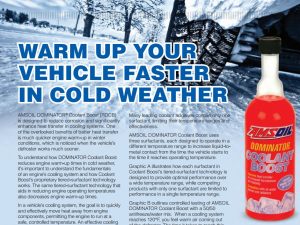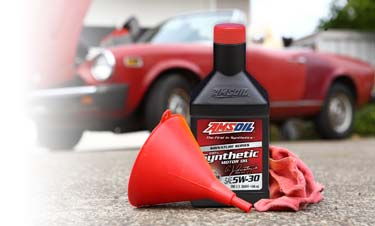Why do Motorists Change Oil in the Spring and Fall For many drivers, budding trees in spring and changing leaves in fall signal the time for an oil change. If you ask them why, they’ll likely just shrug and says it’s what they’ve always done. The reasons are more nuanced than you think. One involves […]
You are browsing archives for
Category: Maintenance
AMSOIL Coolant Boost Speeds Jeep and Eng...
WARM UP YOUR VEHICLE FASTER IN COLD WEATHER AMSOIL DOMINATOR Coolant Boost (RDCB) is designed to reduce corrosion and significantly enhance heat transfer in radiator and cooling systems. One of the overlooked benefits of better heat transfer is much quicker engine warm-up in winter conditions, which is noticed when the vehicle’s defroster works much sooner. […]
New Life for Tired Snowblower
Bypass the Snowblower Follies I bought this snowblower two and a half years ago under the assumption that it was on it’s last leg. The guy I bought it from had no clue about maintenance and thought he was ditching a lost cause. Thanks to AMSOIL I was able to halt the damage and solve […]
Fall is already here – It´s time for an
Hey Sioux Falls, It’s Fall Oil Change Time For those of us who love taking care of our vehicles, falling leaves and dropping temperatures signal the time for an oil change. Prepare your vehicle for winter with AMSOIL Signature Series Synthetic Motor Oil. Its superior performance helps you take engine protection to the next level. […]


